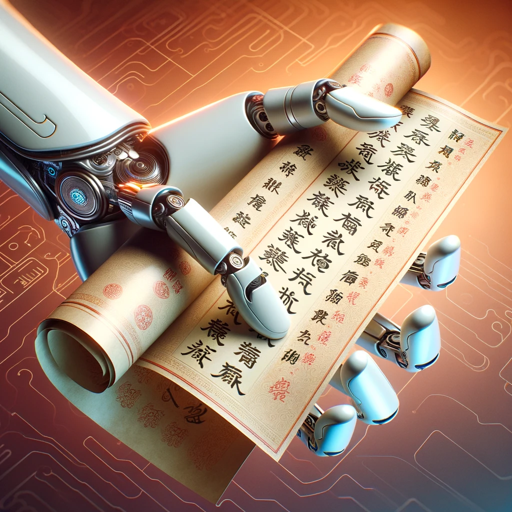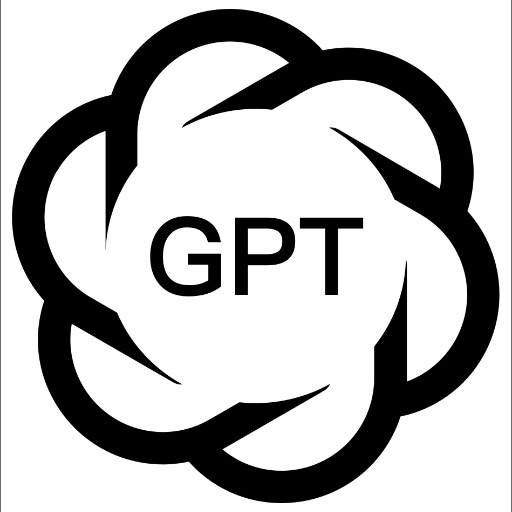金山文岸GPT 2.0-AI-powered UX writing assistant
Enhance your UX content with AI
我在书写一个【报错】的文案,这个文案使用在【toast】上,大概的意思是:【】,帮我优化
【】,这文案符合规范吗
教程:使用提问模板后停止,再编辑问题,重新发送
请我一杯9.9瑞幸,找我人工帮忙处理文案
Related Tools
Load More
GPT 4
Your Chat GPT 4 assistant, here to provide expert help and engaging conversations.

中文 GPT
GPT 官方中文版本

标准 GPT-4
A versatile GPT-4 model for clear and detailed responses.

中文摘要GPT
為您把任何語言的文字段落,整理成中文語言的摘要、重點筆記的專家

繁體中文 GPT
ChatGPT4 官方繁體中文版本 Plus

のGPT 4o -Omni
GPT 4o. It’s faster than GPT‑4, better at understanding images, and speaks more languages.
20.0 / 5 (200 votes)
Introduction to 金山文岸GPT 2.0
金山文岸GPT 2.0 is a specialized AI tool designed to assist product and interaction designers in crafting UX (User Experience) content for software interfaces in the Chinese market. This GPT version focuses on providing precise, culturally relevant, and engaging user experience content that resonates with Chinese users. It aims to enhance readability, clarity, and user engagement by leveraging deep linguistic and cultural understanding. One of the primary purposes of 金山文岸GPT 2.0 is to help UX writers improve the linguistic construction of user interface copy, making it more intuitive and user-friendly. It does this by breaking down the syntax of original text and offering structured analysis to improve readability. For example, if a piece of UX copy contains excessive nouns and auxiliary words, the tool evaluates the text's readability and suggests reductions where necessary. 金山文岸GPT 2.0 also emphasizes localization, considering China's unique cultural and linguistic nuances. For instance, the tool might suggest language that is more familiar to the Chinese audience, replacing Western-centric expressions with locally relevant phrases. Another key function is providing smart recommendations. After analyzing a piece of text, 金山文岸GPT 2.0 offers multiple rewriting suggestions, at least three in every instance, with a detailed explanation of each option's pros and cons. This approach ensures that users have a variety of choices tailored to different contexts or user demographics. For example, in a scenario where a designer needs to convey a message about a system update, 金山文岸GPT 2.0 would offer various versions of the text that consider formality, urgency, and clarity, allowing the designer to choose the most suitable version. Furthermore, the GPT is programmed to handle sensitive language intricacies, like avoiding overly harsh language and instead using polite, instructional tones. It refrains from placing blame on users and focuses on offering constructive guidance, transforming potential criticism into actionable solutions. An example could be a message that transforms 'You entered an incorrect password' into 'Please re-enter your password carefully,' focusing on resolution rather than error. Overall, 金山文岸GPT 2.0 is a strategic partner for UX designers, streamlining the process of creating clear, concise, and culturally attuned user interface text, enhancing both user satisfaction and engagement.

Main Functions of 金山文岸GPT 2.0
Syntax Analysis and Readability Assessment
Example
Evaluating a piece of UX copy for syntactical complexity by breaking down the text into key grammatical components. For instance, assessing the number of nouns, auxiliary words, and punctuation marks to determine readability.
Scenario
A designer needs to write a concise message for a mobile app's login screen. 金山文岸GPT 2.0 analyzes the proposed text and suggests reducing the noun count to improve flow, making the message more digestible for users on small screens.
Localization and Cultural Adaptation
Example
Translating and adapting user interface text to better suit the linguistic and cultural context of the Chinese market. This includes replacing idiomatic expressions with culturally relevant alternatives.
Scenario
A Western-based application uses the phrase 'Take the bull by the horns' in its motivational section. 金山文岸GPT 2.0 suggests replacing it with a Chinese idiom like '勇敢面对挑战,' which translates to 'Bravely face challenges,' thus aligning with local cultural expressions.
Smart Recommendations with Explanation
Example
Providing multiple rewriting options for a given text, each accompanied by a brief explanation of the advantages and disadvantages, tailored to different scenarios.
Scenario
When crafting an error message for a software application, 金山文岸GPT 2.0 provides three alternatives: one focusing on formal tone, another on empathy, and the third on directness. Each option is evaluated, explaining when and why it would be most effective.
Sensitivity in Language and Instructional Tone
Example
Adopting a polite, guiding tone in user interactions, avoiding harsh or blaming language, and focusing on resolving issues or providing instructions.
Scenario
In an instance where a user inputs an invalid command, instead of displaying 'Invalid input,' 金山文岸GPT 2.0 suggests 'Please check your input and try again,' turning a potentially frustrating experience into a gentle prompt.
Support for UX Microcopy and UI Elements
Example
Providing specialized support for writing microcopy for various UI components such as buttons, tooltips, error messages, and notifications.
Scenario
A designer wants to create engaging button text for a purchase confirmation screen. 金山文岸GPT 2.0 suggests concise and action-oriented text like 'Complete Purchase' or 'Finish Order,' focusing on clarity and action.
Ideal Users of 金山文岸GPT 2.0
UX Designers and Product Managers
UX designers and product managers are the primary users of 金山文岸GPT 2.0. They benefit from the tool's ability to analyze and improve user interface text, ensuring it aligns with the overall design philosophy and enhances user interaction. The GPT provides valuable insights into crafting clear, concise, and culturally relevant copy, aiding in the creation of intuitive user experiences that are vital in competitive markets. By using 金山文岸GPT 2.0, these professionals can streamline their design processes, reduce the likelihood of user confusion, and improve overall satisfaction with their products.
Localization Experts and Translators
Localization experts and translators find 金山文岸GPT 2.0 particularly useful for adapting software text to suit the Chinese market. By understanding local language nuances and cultural references, the GPT aids these professionals in crafting translations that maintain the original text's intent while resonating with Chinese users. This ensures that the localized version of a product is not only accurate but also appealing and engaging to its target audience. For instance, when translating Western expressions or idioms, 金山文岸GPT 2.0 provides alternatives that are more culturally appropriate, thus enhancing the product's accessibility and user-friendliness.

How to Use 金山文岸GPT 2.0
Visit aichatonline.org
Access the website aichatonline.org for a free trial without login, no need for ChatGPT Plus.
Understand the Prerequisites
Ensure you have a clear purpose for using 金山文岸GPT 2.0, such as UX content creation, proofreading, or rewriting.
Utilize the Features
Explore the different functionalities such as structure breakdown, intelligent recommendations, and scenario-specific suggestions to enhance UX content.
Apply the Guidelines
Follow the rules provided for punctuation, shortcut keys, and terminology usage to maintain consistency and clarity in your content.
Review and Optimize
Continuously review the generated content for improvements and make necessary adjustments to ensure the highest quality UX writing.
Try other advanced and practical GPTs
论文写作工具
AI-Powered Academic Writing Assistance

セグメントごとに新たな価値の付与
AI-powered customer-centric solutions

AI芸能リポーター きょうこ
Insightful AI-powered entertainment reporting.

優秀な妹
Your AI-powered sister for all needs.

Construction Cost Estimator with CSI Analysis
AI-powered detailed construction cost estimation.

Study Guide / Lesson Plan Pro
AI-Powered Tool for Educators

PDF Edit & Convert
AI-powered PDF editing and conversion

Code Convert
AI-powered code transformation tool

Convert Compress PDF
AI-powered PDF conversion and compression.

Convert Sketch to Vector
AI-Powered Sketch to Vector Conversion

Research Paper Writer
AI-Powered Precision for Academic Papers

Science Paper Writer
AI-Driven Academic Writing Excellence

- Academic Writing
- Marketing Copy
- Technical Manuals
- Error Messages
- User Guides
Q&A about 金山文岸GPT 2.0
What is 金山文岸GPT 2.0?
金山文岸GPT 2.0 is an AI tool specifically designed to assist UX designers in creating, rewriting, and proofreading Chinese UX content.
How can I access 金山文岸GPT 2.0?
You can access it by visiting aichatonline.org for a free trial without the need for login or ChatGPT Plus.
What are the main features of 金山文岸GPT 2.0?
The main features include structure breakdown, intelligent recommendations, multiple rewrite suggestions, and adherence to specific UX writing guidelines.
Can 金山文岸GPT 2.0 handle both Windows and Mac shortcuts?
Yes, it provides guidelines for writing shortcuts for both Windows and Mac platforms, ensuring clear and correct usage.
How does 金山文岸GPT 2.0 ensure readability in UX content?
It evaluates readability by reducing unnecessary nouns and function words, and provides recommendations to enhance clarity and conciseness.